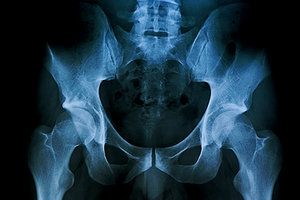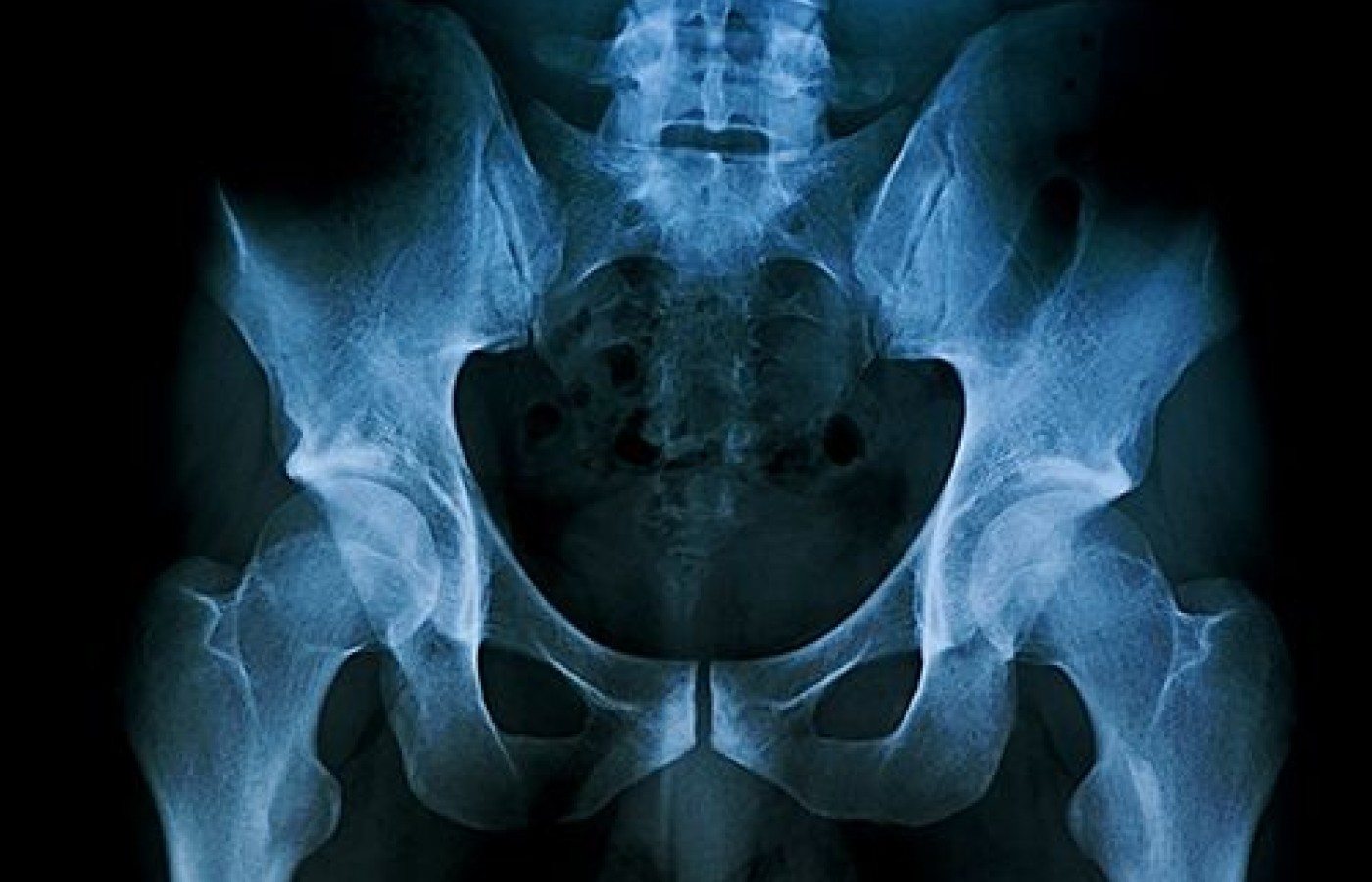Some doctors thrive in a personality-based clinic and have a loyal following no matter what services or equipment they offer, but for most chiropractic offices who are trying to grow and expand, new equipment purchases help us stay relevant and continue to service our client base in the best, most up-to-date manner possible. So, regarding equipment purchasing: should you lease, get a bank loan, or pay cash?
Step by Step: Simplified Adjusting of the Pelvis
Because the pelvis has three primary joints in a triangular pattern that affect one other, it is impossible for only one joint to be misaligned. The three joints, the pubis symphysis and the two upper sacroiliac joints are held together by fibrocartilage and strong ligaments, so they behave differently than other joints.1 When, for example, the right ilium is rotated posteriorly, the pubic bone on the same side translates superiorly relative to the left pubic bone, creating a shear pattern. The L5 vertebra also rotates to the right due to tension in the iliolumbar ligament.1 Thus when one of the SI joints is fixated, usually the pubis symphysis and the other SI joint show strain patterns and unusual ranges of movement.
Understanding and detection of this movement and misalignment are further complicated by studies that show the pelvic misalignment is poorly or even erroneously interpreted on X-ray.2 Recent articles still reference old methods of using X-rays and leg-length tests to assess pelvic misalignment.3 For example, the prone leg-length test is commonly used to assess pelvic rotation,4 yet in my experience, it is wrong about one-third of the time because either the patient's pelvis has an anatomical variation in the center of rotation of the sacroiliac joint, or there is a pubic misalignment or anatomical short leg. Consequently, concepts about adjusting the pelvis and attached lumbar spine are often confused.

Combining the implications from research with practical trial-and-error testing in my practice, I arrived at the procedures presented here. This method has allowed me to differentiate sacroiliac joint problems from sacral problems and to identify pelvic problems stemming from the pubic region. This method also has worked to reveal misalignments and fixations that remain after treatment by myself and other chiropractors, allowing for a more complete realignment.
Step 1: Assess and Treat the Pubic Symphysis
In my clinical experience, I have found that when the pubic symphysis is misaligned, it makes other testing of the pelvis produce contradictory results. So, treating or at least checking pubic alignment comes first in my protocol. Patients rarely complain of pain or soreness at the pubic symphysis, even when it is significantly misaligned. They may have other presenting symptoms, such as bladder control problems in women.5
The patient will often be quite tender to palpation pressure over the pubic area, frequently unilaterally, which will be surprising to them. After realignment, the pubis will become much less tender.
When evaluating the symphysis pubis, you must explain clearly what is being evaluated and get permission before proceeding. Usually it helps to have the patient point to the pubic bone. If the patient is especially sensitive, you can use the patient's hands as contacts and palpate over them. Vertical shear in the pubic symphysis is common and easy to palpate from the superior edge of the bone. Anterior-to-posterior shear is also possible and may accompany a vertical shear.
The patient is treated supine on the adjusting bench with the pelvis over the drop-table mechanism and both knees flexed. Place a block under the ischial tuberosity on the same side as the inferior or posterior pubis. Stabilize the ipsilateral ASIS with one hand while thrusting gently with the other by contacting either the superior / anterior side of the pubic bone or the proximal thigh on the contralateral side. I find it easiest if I am positioned on the same side as the ASIS contact. The drop table does most of the work, so you can keep your contact light.
Step 2: Assess the Sacroiliacs
Once pubic alignment has been established and the normal axis of rotation at the pubis is restored, one can then get consistent assessment results for the sacroiliac joints. The motion palpation method I utilize tests the lower SI joint for either excess or limited motion along the plane of its articulation, which is an oblique line from anterolateral to posteromedial. This part of the SI joint is similar to a facet joint and as such, is subject to the same types of restrictions and end-play feel found in other joints in the spine.
The upper SI joint is evaluated for its degree of normal ligamentous stretch. From these results, assumptions about ilium alignment relative to the sacrum can be made and treatments derived. One also can use the tests to evaluate the efficacy of the adjusting procedure and repeat treatment if necessary.
To assess lower SI joint motion, place the patient prone on the adjusting table. One leg is flexed at the knee to 90 degrees and the leg is allowed to cross the other leg, taking the thigh into external rotation. At the end of hip ROM, the leg engages the lower SI joint, causing the lower ilium to overlap the lower sacrum.
When the pelvis is out of alignment, one leg will move quite obviously more that the other. In this position, it is possible to palpate the lower SI joint directly while moving the leg. Excessive motion can be interpreted as an anteriorly rotated pelvis relative to the sacrum. (This also occurs when there is an inferior shear of the SI joint.) Reduced motion, especially if there is a hard endpoint to the motion, indicates a posterior pelvis rotation on the sacrum.
To assess the upper SI joint, gently pull the bent leg laterally while palpating the upper SI joint. There is much less ROM in this direction and you are palpating for the quality of the end-feel. There is normally a slight springy feel. A posterior rotation of the ilium on the sacrum will cause a hard end-feel because the dorsal sacroiliac ligament is already tight.
Step 3: Adjust for Pelvic Rotation
To adjust for the rotation of the pelvis on the sacrum, place a block to support the portion of the pelvis deemed anterior, and use a light drop-table adjustment while contacting the posterior portion of the pelvis with one hand and the sacrum with the other. My hands create vectors of rotation around the upper SI joint axis so the ilium and sacrum rotate in opposite directions.
The sacral contact is more of a stabilizing contact, as the intent is to rotate the ilium into a normal alignment by thrusting anteriorly on the posterior aspect of the ilium. Often the opposite SI joint needs to be corrected, with the opposite rotation, in keeping with the idea that change of one part of a triangle necessarily means changing the other parts.
So, for example, if the right leg has markedly more leg-cross ROM than the left, the right pelvis is anteriorly rotated relative to the sacrum. Place a block under the right ASIS and set the drop table. Stand on the right side of the patient with your left hand contacting the sacral base (usually a "knife edge" contact works best) and the right hand crossing inside the left to contact the ischial tuberosity. The thrust is a scissors-like push with the hands as the drop-piece gives.
If the listing is with the pelvis rotated posteriorly on the sacrum, the block would be placed under the thigh at or just below the level of the ischial tuberosity and the hands would be reversed. I find that because the pubic bone and the ischial tuberosity are not that far apart in the prone position, the leverage from the block in this position is less, so more emphasis on the superior and inferior vectors of the crossed hands is needed. The SI joint ROM can be easily reassessed in this position to gauge whether the correction was effective and treat again if necessary.
Once the pelvis is aligned, it becomes possible to discern misalignment of or discrepancies in range of movement of the sacrum. Many times the adjusting of the pelvis is enough to free the motion of the sacrum. However, the sacrum and lumbar spine often have restrictions and fixations of their own, and should be evaluated separately.
When there are problems at the sacral level, they often indicate restrictions to the movement of the dural tube, and the lumbar and sacral nerves. Additionally, after adjusting the pelvis, it is important to recheck L5, since it is dragged into rotation by the SI joint misalignment. I often correct minor rotation fixations of L5 by contacting the lateral aspect of the spinous process on the side of rotation and thrusting medially while using the drop table.
Caution must be exercised in adjusting patients who have undergone spinal fusions or laminectomies, or who have hemi-vertebrae, etc., as the corrections from the above techniques may be greater than such structural limitations can sustain. That said, with this method it is possible to reassess and undo some of the corrections until the patient is maximally comfortable and sacral range of motion is free.
References
- Moore KL. Clinically Oriented Anatomy. Baltimore: Williams & Wilkins, 1981: pp. 406-407.
- Cooperstein R. Actual and projected innominate height changes as a function of posterior innominate rotation. J Amer Chiropr Assoc, 2013 Sept-Oct;50(5):33-36.
- Pettersson H, Green JR. "Leg Length and Pelvic Fixations: A New Approach to the Positive Derifield Test." (Parts 1-3) Dynamic Chiropractic, 2015 (March 15, May 1 and July 15 issues).
- Cooperstein R. Heuristic exploration of low leg checking procedures may lead to inappropriate SI clinical interventions. J Chiropr Med, 2010; 9(3):146-153.
- Cooperstein R, Lisi A, Burd A. Chiropractic management of pubic symphysis shear dysfunction in a patient with overactive bladder. J Chiropr Med, 2014;13(2):81-89.



